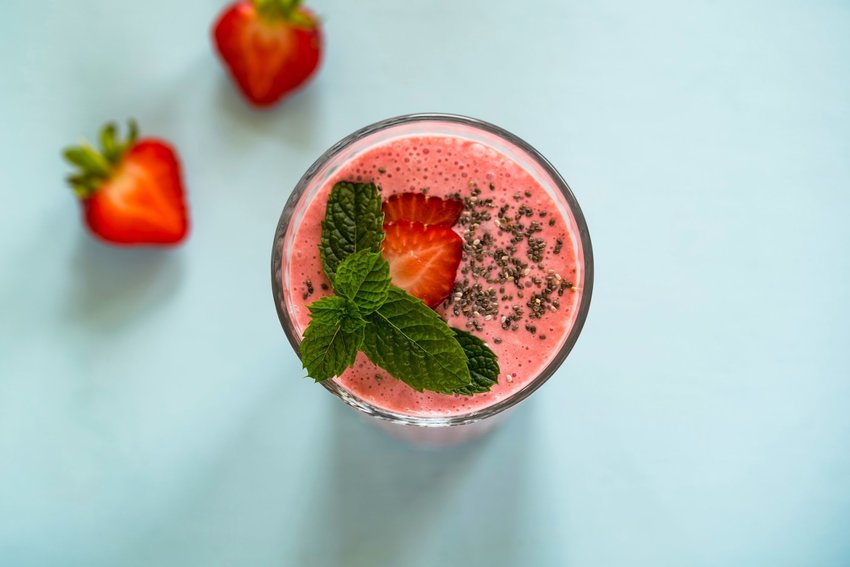Whether green, fruity, frosty, or creamy, smoothies are one of the go-to options for breakfast, snacks, and post-workout recovery meals. But the word "smoothie" didn't start with this blended treat. Here's a bit of trivia to peruse while you drink your morning smoothie.
It Starts With the Fruit
The concept of enjoying pureed fruit on a large, commercial scale kicked off in the 1920s when Julius Freed, suffering from a sensitive stomach, discovered that by making fresh orange juice more frothy and less acidic he could finally enjoy the taste of citrus drinks. The result? Orange Julius, one of the longest-running fast food franchises, was born.
The rest was the perfect storm. First, the invention of safe home refrigeration in the 1930s meant you could start storing fresh fruit at home. Second, the invention of the blender in the 1940s led to affiliated recipe books that promoted as many uses for your blender as possible — including, in one “Recipes to Make Your Waring-Go-Round” cookbook, a dozen milk smoothies. By the 1950s, milkshakes had taken off and have remained a symbol of soda shop teen culture during that decade.
Shakes vs Smoothies
But what made a smoothie different from a shake? Going back to the 1920s, smoothie was used to describe a suave, self-assured person, particularly when interacting with the opposite sex. By the 1960s this adjective was applied to a variety of things considered slick, suave, or attractive – from ladies’ undergarments to smooth-writing ballpoint pens to automotive paint. Smoothie became part of the hippie vernacular at this point.
Hippie culture also led to a closer look at nutrition and health, as the pendulum shifted from indulgent ’50s dining habits. Macrobiotic diets became popular, and health food stores began selling blended fruit juices to respond to this trend.
Enter Steven Kuhnau, another young man with digestive issues like Julius Freed. Lactose intolerant, Kuhnau couldn’t drink milkshakes like his peers, so he created his own frozen treats by blending fruit, ice, and other healthy ingredients. Excited with his concoctions and spotting a gap in the market, Kuhnau decided to take his drinks to the masses.
Recognizing the importance of differentiating his frozen fruit drinks from shakes, Kuhnau applied the term "smoothie" to appeal to hippies: a key demographic that was already tapped into the health benefits he was pushing. He knew the term was well-known among his audience, and thus his fast-food operation Smoothie King was born. And with 600 stores today, the brand that started the smoothie craze has also defined what makes a smoothie a smoothie.
While many smoothies today feature dairy ingredients, most people still associate smoothies with nutrition and health benefits — all thanks to its origins in ’60s youth culture.

